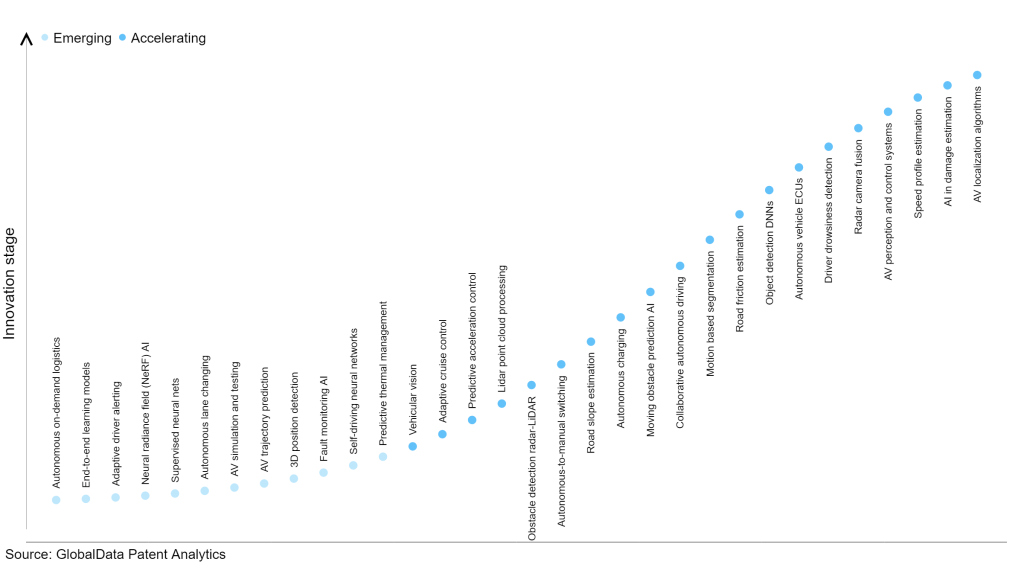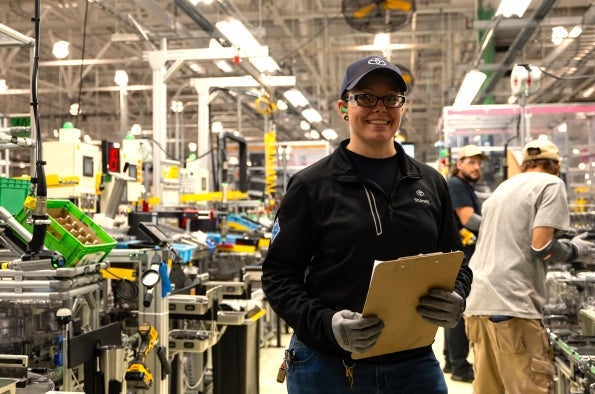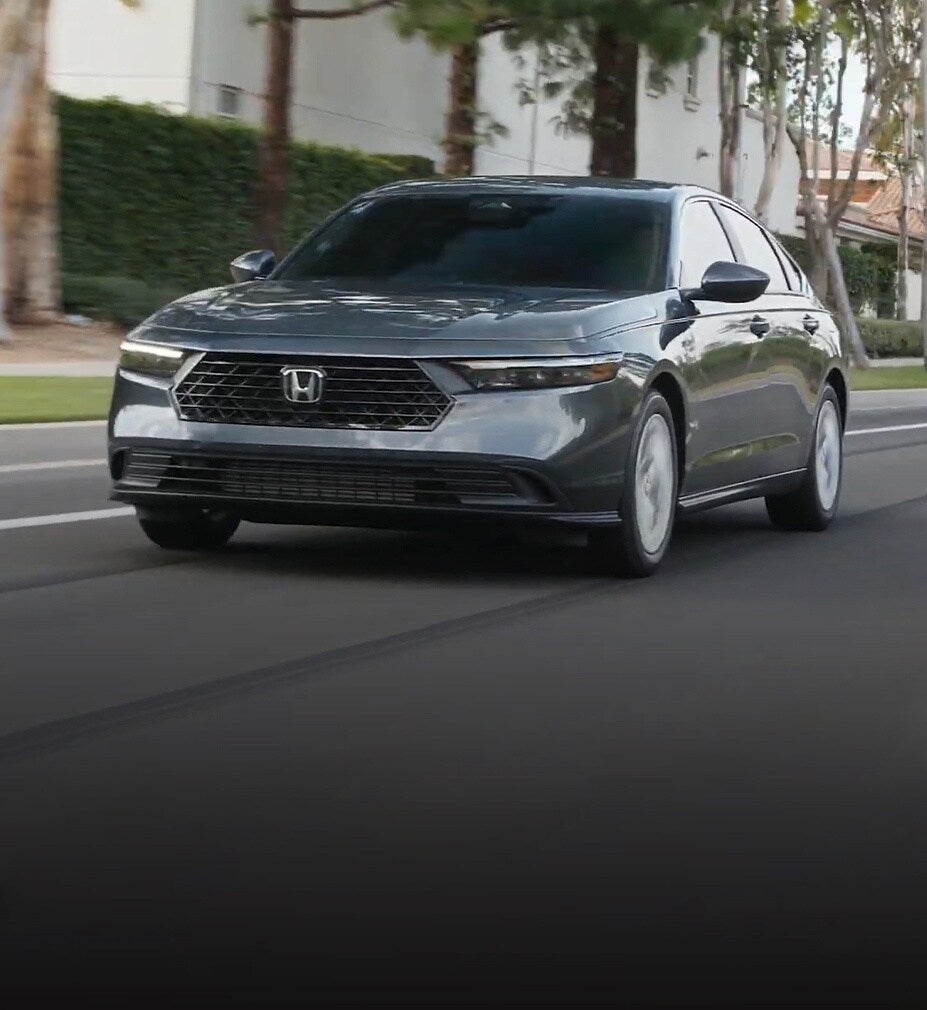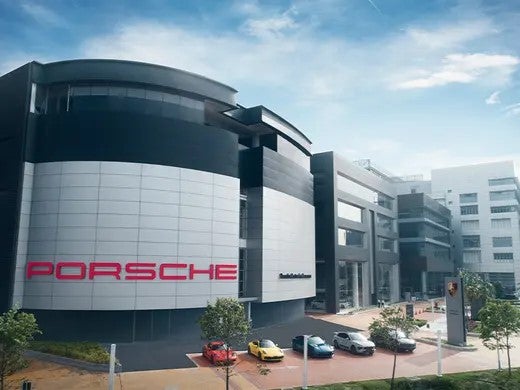The automotive industry continues to be a hotbed of patent innovation. Activity is driven by the need for enhanced driving experience, fuel efficiency, and engine performance, and growing importance of technologies such as sensors, artificial intelligence, and machine learning. In the last three years alone, there have been over 1.7 million patents filed and granted in the automotive industry, according to GlobalData’s report on Artificial intelligence in automotive: road friction estimation. Buy the report here.
However, not all innovations are equal and nor do they follow a constant upward trend. Instead, their evolution takes the form of an S-shaped curve that reflects their typical lifecycle from early emergence to accelerating adoption, before finally stabilizing and reaching maturity.
Identifying where a particular innovation is on this journey, especially those that are in the emerging and accelerating stages, is essential for understanding their current level of adoption and the likely future trajectory and impact they will have.
300+ innovations will shape the automotive industry
According to GlobalData’s Technology Foresights, which plots the S-curve for the automotive industry using innovation intensity models built on over one million patents, there are 300+ innovation areas that will shape the future of the industry.
Within the emerging innovation stage, autonomous on-demand logistics, end-to-end learning models, and adaptive driver alerting are disruptive technologies that are in the early stages of application and should be tracked closely. Vehicular vision, adaptive cruise control, and predictive acceleration control are some of the accelerating innovation areas, where adoption has been steadily increasing.
Innovation S-curve for artificial intelligence in the automotive industry

Road friction estimation is a key innovation area in artificial intelligence
The amount of friction an automobile's tyre has with the ground determines its maximum acceleration and more importantly its shortest stopping distance. There are five different ways to measure road friction: locked wheel (100% slip), constant slip (typically between 10% and 20% slip), variable slip (0% to 100% slip), constant slip angle (typically 200), and retardation measurement of a typical ABS braked car.
GlobalData’s analysis also uncovers the companies at the forefront of each innovation area and assesses the potential reach and impact of their patenting activity across different applications and geographies. According to GlobalData, there are 20+ companies, spanning technology vendors, established automotive companies, and up-and-coming start-ups engaged in the development and application of road friction estimation.
Key players in road friction estimation – a disruptive innovation in the automotive industry
‘Application diversity’ measures the number of applications identified for each patent. It broadly splits companies into either ‘niche’ or ‘diversified’ innovators.
‘Geographic reach’ refers to the number of countries each patent is registered in. It reflects the breadth of geographic application intended, ranging from ‘global’ to ‘local’.
Patent volumes related to road friction estimation
| Company | Total patents (2021 - 2023) | Premium intelligence on the world's largest companies |
| Volvo | 64 | Unlock Company Profile |
| Bridgestone | 113 | Unlock Company Profile |
| COSCO Shipping | 16 | Unlock Company Profile |
| Camfin | 23 | Unlock Company Profile |
| Tata Motors | 20 | Unlock Company Profile |
| Subaru | 25 | Unlock Company Profile |
| Compagnie Generale des Etablissements Michelin | 54 | Unlock Company Profile |
| Toyota Motor | 55 | Unlock Company Profile |
| Robert Bosch Stiftung | 68 | Unlock Company Profile |
| Zhejiang Geely | 26 | Unlock Company Profile |
| Hyundai Motor | 18 | Unlock Company Profile |
| Westinghouse Air Brake Technologies | 83 | Unlock Company Profile |
| Nissan Motor | 35 | Unlock Company Profile |
| Hitachi | 24 | Unlock Company Profile |
| General Electric | 13 | Unlock Company Profile |
| Honda Motor | 25 | Unlock Company Profile |
| Mitsubishi Electric | 27 | Unlock Company Profile |
| Porsche Automobil | 81 | Unlock Company Profile |
| General Motors | 31 | Unlock Company Profile |
| Safran | 13 | Unlock Company Profile |
| Airbus | 15 | Unlock Company Profile |
| Denso | 31 | Unlock Company Profile |
| Continental | 51 | Unlock Company Profile |
| Ford Motor | 29 | Unlock Company Profile |
| Tokai | 26 | Unlock Company Profile |
| Stella Vermogensverwaltungs | 60 | Unlock Company Profile |
| Zeppelin-Stiftung | 43 | Unlock Company Profile |
Source: GlobalData Patent Analytics
Bridgestone is the leading patent filer in road friction estimation. The company provides active safety systems including antilock braking systems, electronic stability control systems, and active collision avoidance systems. Antilock braking systems' primary job is to prevent wheel lock during hard braking and to keep the amount of traction between the tires and the pavement at a desirable level. The tire road friction coefficient is typically used to calculate the magnitude of this ideal traction. Other companies innovating in this technology domain are Westinghouse Air Brake Technologies, Porsche Automobil Holding, and Robert Bosch Stiftung.
In terms of application diversity, Zhejiang Geely held the top position, while Denso and Ford Motor stood in second and third positions, respectively. By means of geographic reach, Nissan Motor leads the pack, followed by Tokai and Westinghouse Air Brake Technologies.
To further understand how artificial intelligence is disrupting the automotive industry, access GlobalData’s latest thematic research report on Artificial Intelligence (AI) in Automotive.
Data Insights
From

The gold standard of business intelligence.
Blending expert knowledge with cutting-edge technology, GlobalData’s unrivalled proprietary data will enable you to decode what’s happening in your market. You can make better informed decisions and gain a future-proof advantage over your competitors.







